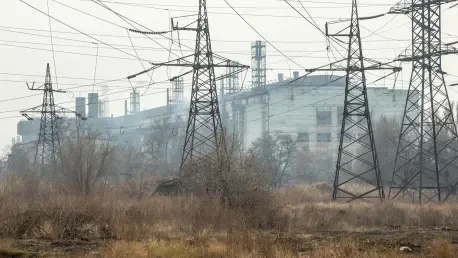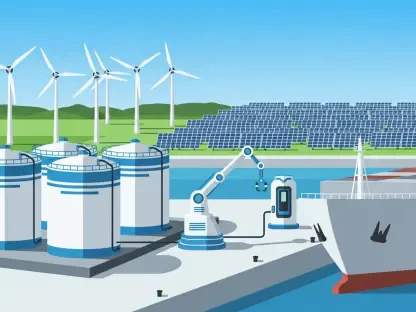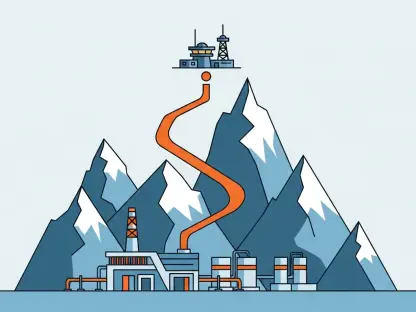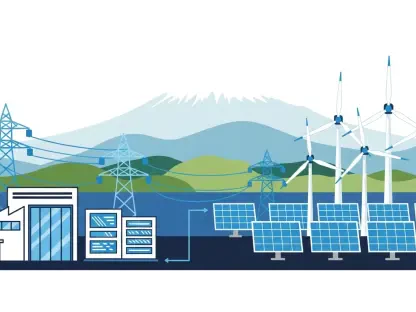Imagine a nation plunged into darkness, not just from the shadow of war, but from a deliberate strike on its lifeblood—its energy infrastructure, leaving hundreds of thousands without power or water on a chilling October day in 2025. Ukraine faced one of its most severe assaults yet, as Russia targeted its power systems under the cover of adverse weather, prompting Ukrainian President Volodymyr Zelenskiy to sound the alarm on this calculated attack. This roundup gathers insights from various global voices, including military analysts, energy experts, and diplomatic commentators, to dissect the implications of this crisis, compare differing views on Ukraine’s resilience, and explore paths forward.
Unpacking the Crisis: Diverse Views on Russia’s Strategy
Strategic Timing: Weather as a Weapon
Military analysts across different regions have noted the cunning behind Russia’s choice to strike during poor weather conditions. The consensus is that such timing significantly hampers Ukraine’s air defense capabilities, with effectiveness reportedly dropping by 20% to 30%. This strategy exploits natural elements to maximize damage, a tactic seen as both innovative and ruthless by observers.
Some commentators argue that this approach reveals a deeper intent to destabilize Ukraine beyond mere military gains. By aligning attacks with weather patterns, Russia appears to aim for psychological as well as physical disruption. Analysts suggest that this could set a dangerous precedent for future conflicts, where environmental factors become weaponized.
A contrasting perspective from certain defense experts emphasizes the need for adaptive technologies to counter such strategies. They point out that Ukraine’s current systems, while strained, could be bolstered with weather-resilient defenses. This view sparks debate on whether resources should prioritize immediate recovery or long-term innovation in military preparedness.
Civilian Impact: Energy as a Target of War
Energy sector specialists have weighed in on the devastating civilian toll of targeting Ukraine’s power grid, particularly in four key regions. Reports of darkened neighborhoods in Kyiv, with 380,000 customers affected and metro services halted, paint a grim picture. Many experts see this as a deliberate attempt to erode civilian morale, a tactic meant to break societal resolve.
Differing opinions emerge on the scale of recovery needed. While some industry voices advocate for rapid, localized repairs to restore essential services, others stress a broader systemic overhaul to protect 203 critical energy facilities identified as vulnerable. This divide highlights the tension between short-term relief and sustainable protection against future assaults.
A unique angle comes from humanitarian organizations, which underscore the ripple effects on health and safety. With power and water outages disrupting daily life, the risk of prolonged hardship grows. These groups call for international frameworks to classify energy infrastructure attacks as violations of civilian rights, pushing for stronger global condemnation.
Resilience and Response: Balancing Military and Civilian Needs
Military Strength Amid Infrastructure Strain
Military commentators have offered varied takes on Ukraine’s ability to maintain frontline defenses despite energy challenges. The successful repulsion of a Russian offensive near Dobropillia in Donetsk is often cited as proof of tactical resilience. Analysts praise these localized victories as morale boosters, showing that Ukraine can hold ground even under duress.
However, some strategic thinkers caution against over-optimism. They argue that while battlefield wins are crucial, the nationwide strain on infrastructure could undermine long-term military operations. The potential for similar energy-targeted strikes in other regions remains a looming concern, prompting calls for a more integrated defense strategy.
A third perspective focuses on resource allocation. Certain defense experts question whether military gains can truly offset the civilian losses caused by power disruptions. They suggest that protecting energy grids should be as much a military priority as frontline combat, urging a redefinition of national security in modern warfare.
Global Support: A Critical Lifeline
Diplomatic analysts have closely followed Zelenskiy’s urgent plea for enhanced air defense systems, including the anticipated delivery of 10 units from the United States. Many view international support as a cornerstone of Ukraine’s survival, with past aid proving instrumental in sustaining resistance. The upcoming meeting with a coalition of willing nations is seen as a pivotal moment.
Opinions differ on the pace and scope of assistance. While some commentators believe current commitments are a strong start, others warn that delays or insufficient aid could leave Ukraine exposed to further attacks. This discrepancy fuels discussions on how quickly global partners can mobilize resources without bureaucratic hindrance.
A less common but compelling viewpoint comes from policy advocates who stress diplomatic urgency. They argue that energy infrastructure warfare demands new international treaties to deter such attacks. This angle adds depth to the conversation, suggesting that beyond material aid, a shift in global norms could offer Ukraine long-term protection.
Key Takeaways and Future Directions
Reflecting on the insights gathered, the deliberate nature of Russia’s energy grid attacks stood out as a shared concern among analysts, energy experts, and diplomats. The profound civilian impact, from power outages to disrupted services, underscored the human cost of this strategy. Meanwhile, Ukraine’s military determination and diplomatic outreach were widely recognized as vital components of its response, though opinions varied on their sufficiency.
Differing views on solutions also emerged clearly. Some prioritized immediate air defense upgrades for critical facilities, while others pushed for broader systemic changes and international policies to counter infrastructural warfare. These debates highlighted the complexity of addressing both urgent needs and future threats in a conflict zone.
Looking back, this roundup of perspectives offered a comprehensive lens on Ukraine’s struggle. For actionable next steps, stakeholders could focus on accelerating aid deliveries, particularly for energy protection, while advocating for global agreements to safeguard civilian infrastructure. Further exploration of innovative defense technologies and sustained diplomatic pressure on aggressors could also shape a more secure horizon for nations like Ukraine facing hybrid warfare tactics.









